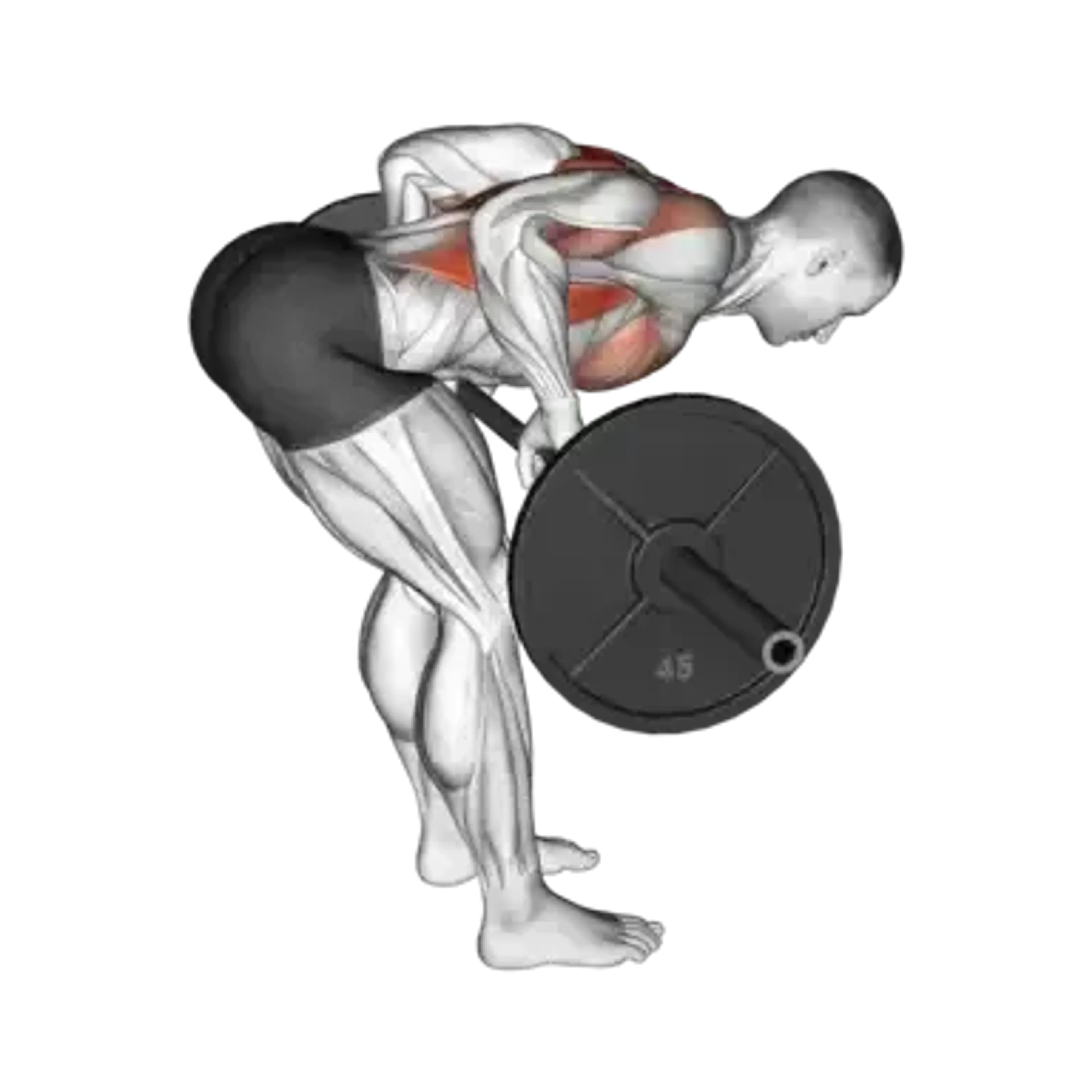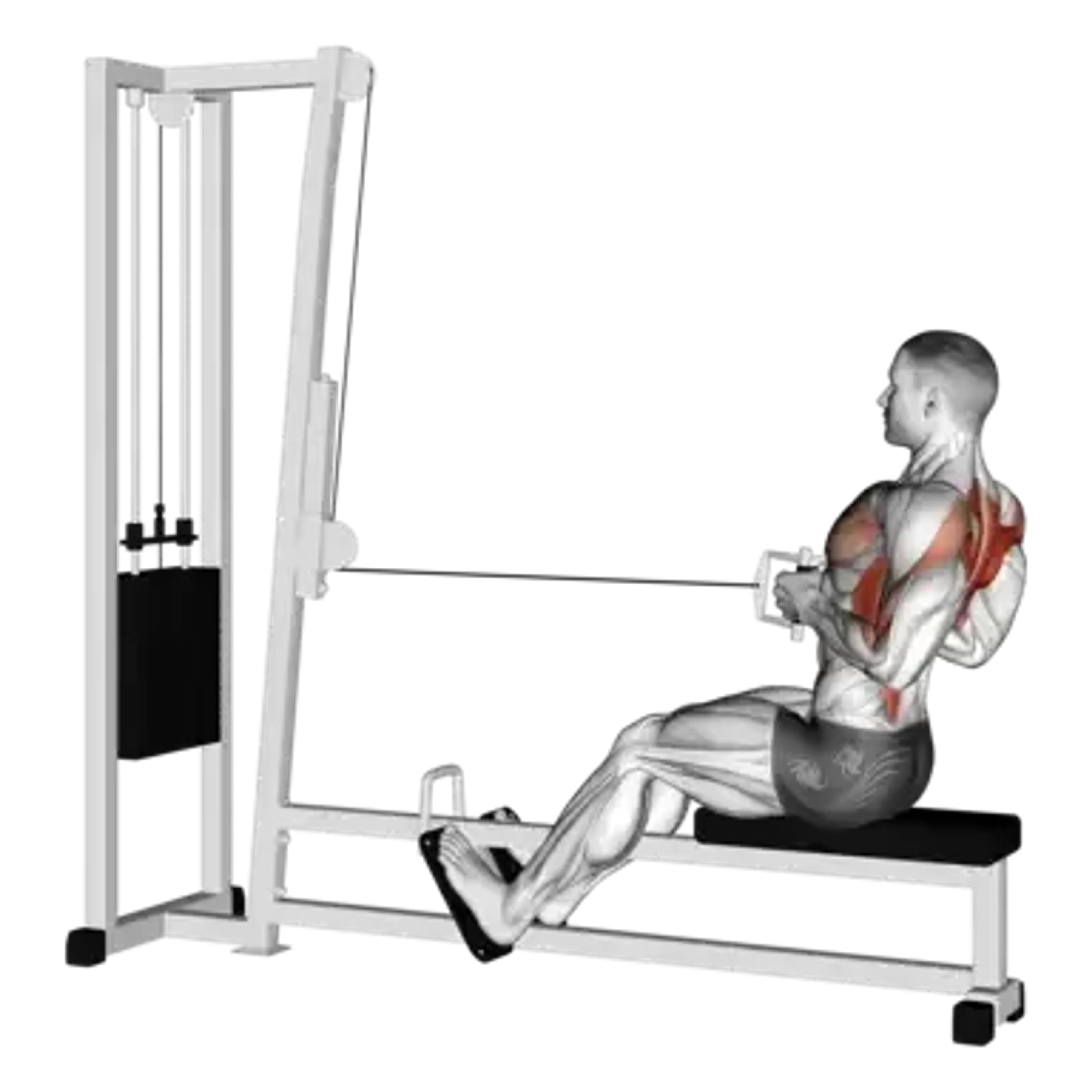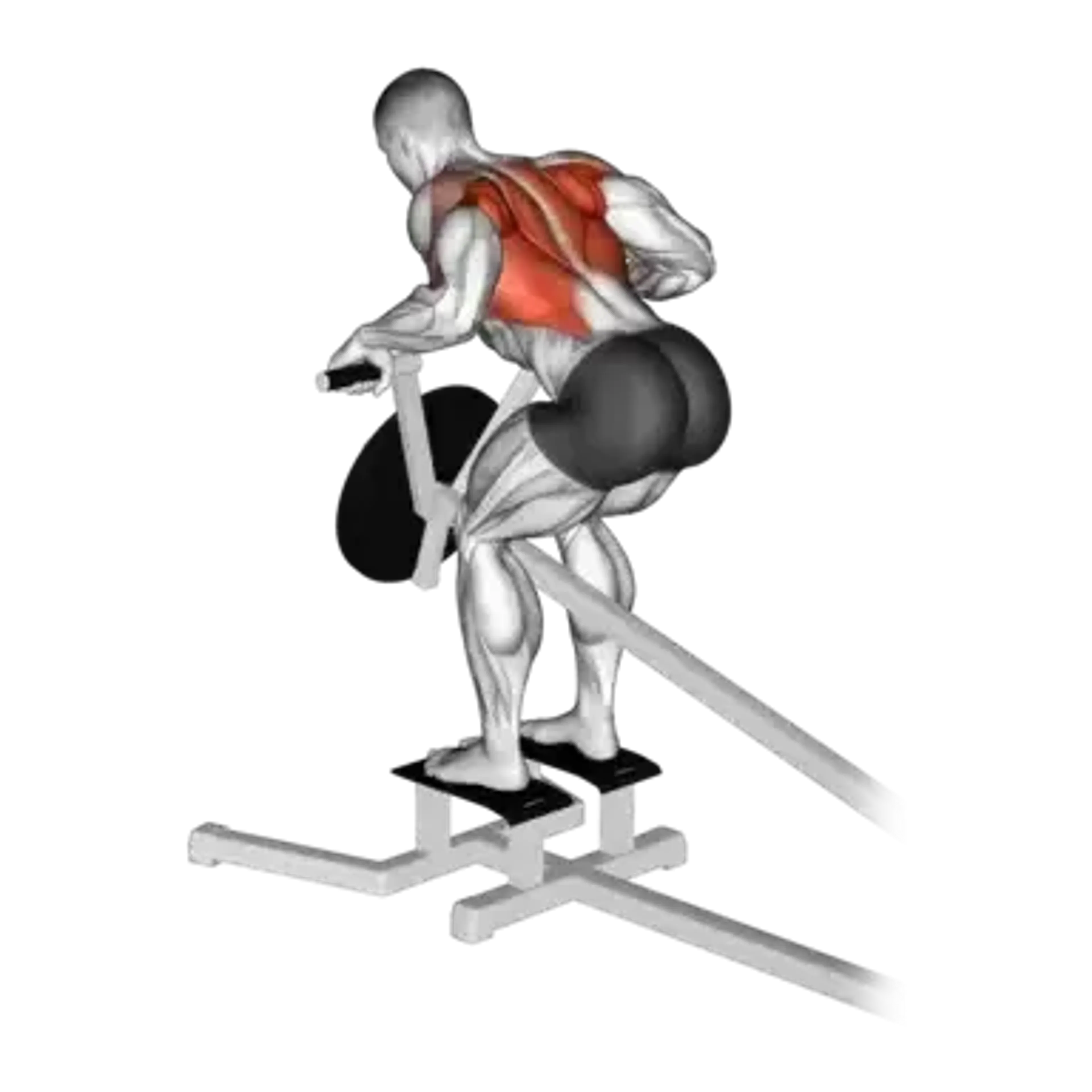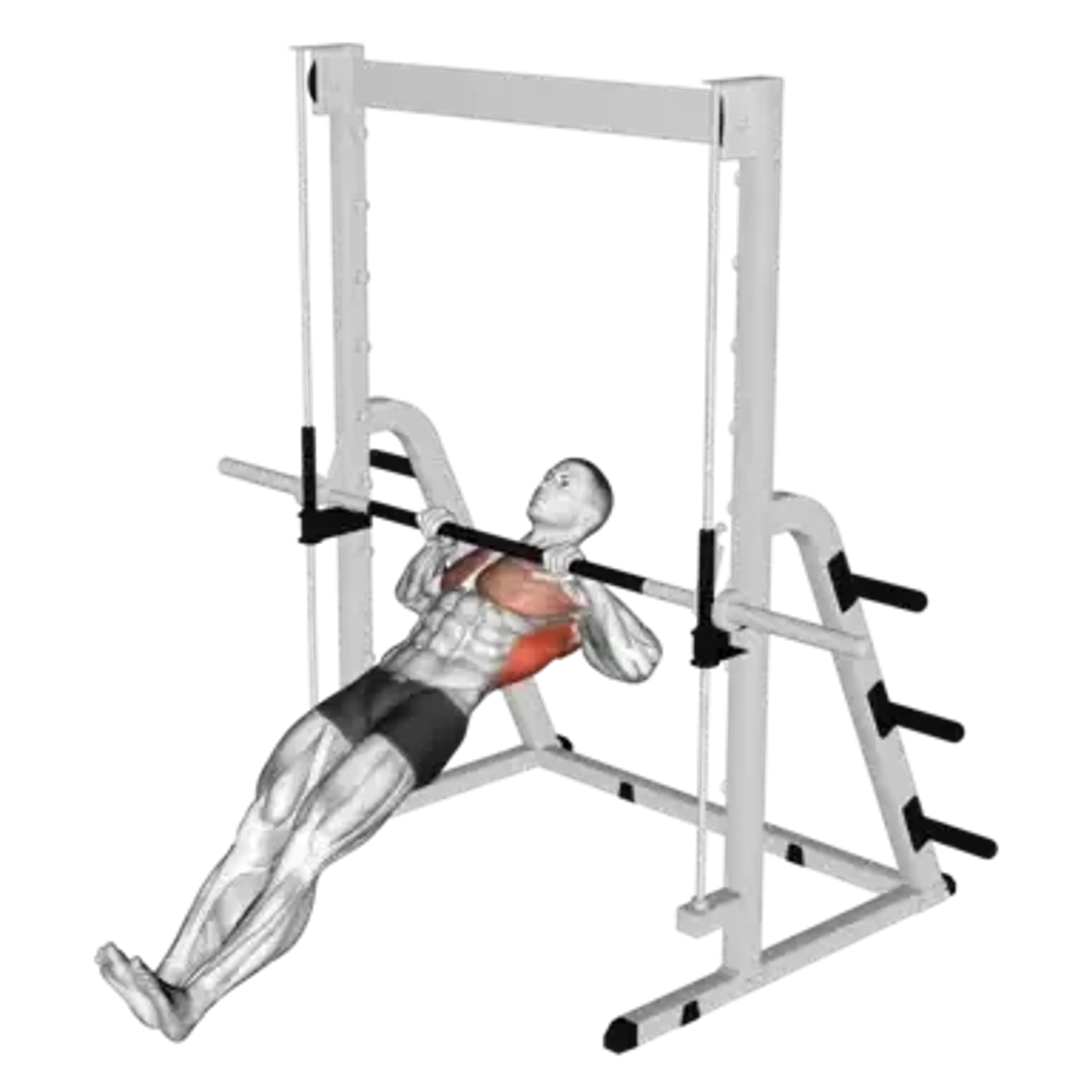Band Bent-Over Row

Overview
- Primary Focus:
- Back.
- Equipment:
- Resistance bands.
- Difficulty:
- Intermediate.
General Information
The Band Bent-Over Row is a compound exercise that primarily targets the latissimus dorsi (lats), trapezius (traps), and rhomboids, while engaging the biceps and rear deltoids as secondary muscles. It’s an excellent option for building upper body strength, improving posture, and enhancing back muscle endurance. This exercise is considered intermediate level due to the need for proper form and core stability to avoid lower back strain.
This movement is a variation of the Barbell Bent-Over Row, providing a more joint-friendly option with constant tension throughout the range of motion. It can also be performed with dumbbells, making it adaptable to different equipment and training environments. Resistance bands offer unique benefits, such as accommodating resistance and reducing momentum, ensuring a more controlled movement.
The Band Bent-Over Row is particularly useful for home workouts, rehabilitation programs, or as a warm-up before heavier compound lifts. Its versatility makes it ideal for developing pulling strength and reinforcing proper rowing mechanics.
Muscles Worked
- Latissimus Dorsi
- Primary
- Biceps Brachii
- High
- Lower Trapezius
- High
- Rhomboid Major
- High
- Deltoid
- Medium
- Brachialis
- Low
- Teres Major
- Low
- Rectus Abdominis
- Minimal
Instructions
- Set Up: Stand with your feet shoulder-width apart, stepping on the band with both feet to secure it. Hold the band handles or grip the band directly, ensuring equal tension on both sides.
- Body Position: Bend at your hips, lowering your torso to about a 45-degree angle. Keep your back straight, chest up, and core engaged. Your arms should hang straight down with palms facing each other or slightly turned inward.
- Pull the Band: Exhale as you pull the band towards your lower ribs by driving your elbows back. Focus on squeezing your shoulder blades together at the top of the movement.
- Lower the Band: Inhale as you slowly extend your arms back to the starting position, maintaining control and tension in the band.
- Repeat: Perform the desired number of repetitions, ensuring proper form throughout the set.
Common Mistakes
Injuries
Band Bent-Over Row is a low to medium risk exercise when performed with proper technique. However, poor form can lead to potential injuries:
- Lower Back Strain: Rounding the back or failing to engage the core can place excessive pressure on the lumbar spine. Always maintain a neutral spine and keep your core tight.
- Shoulder Impingement: Pulling the band too high or flaring the elbows outward can lead to discomfort in the shoulders. Keep the elbows close to the torso to avoid unnecessary stress.
- Bicep Strain: Over-relying on the arms instead of the back can lead to bicep fatigue or strain. Focus on pulling with your elbows and squeezing the shoulder blades at the top.
Proper warm-up, using an appropriate band resistance, and focusing on controlled movements will significantly reduce the risk of injury.
Alternative Exercises
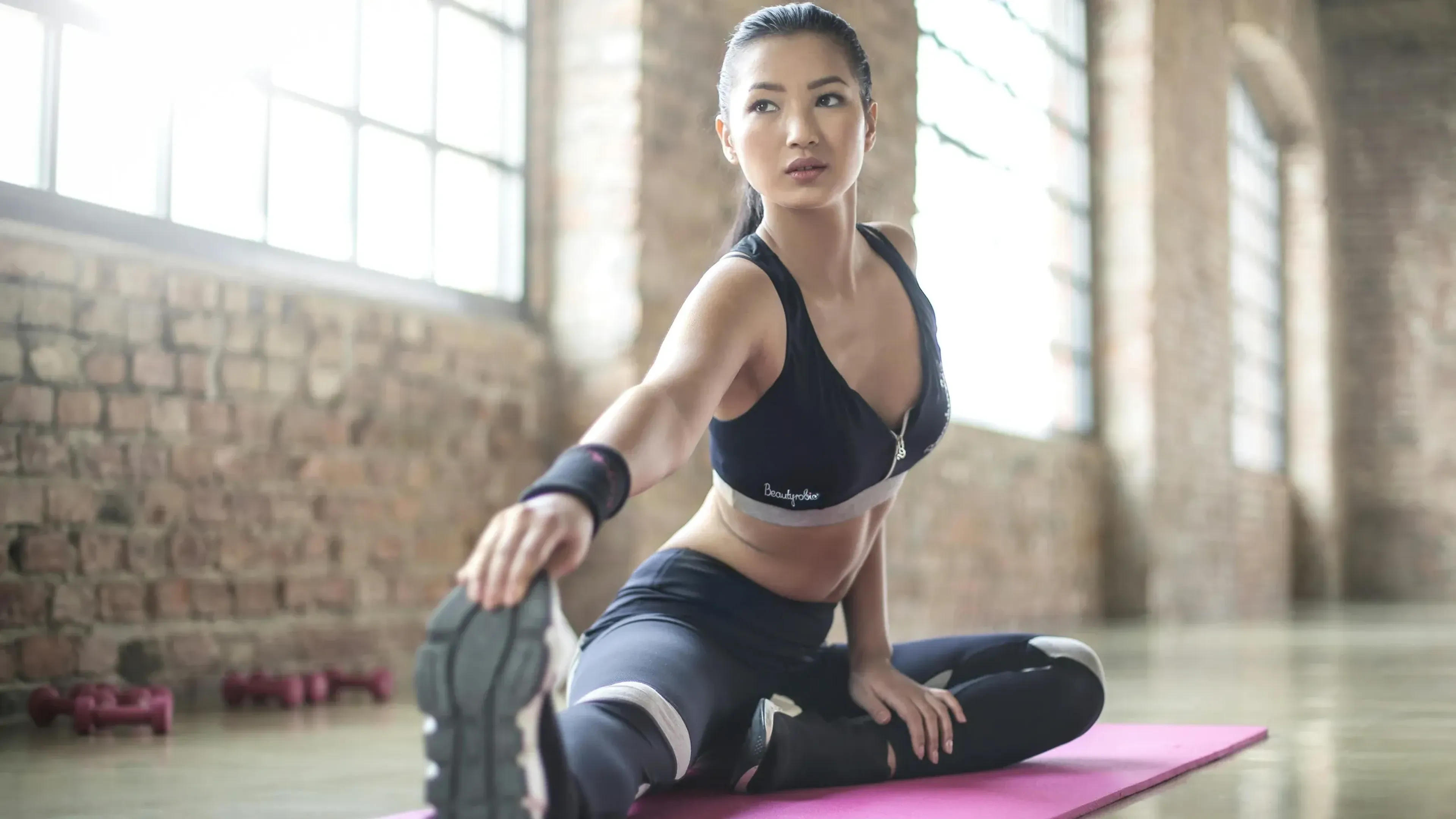
Frequently Asked Questions
- Q: How do I increase the resistance in a Band Bent-Over Row?
Use a thicker band or widen your stance to increase tension.
- Q: Can beginners do Band Bent-Over Rows?
Yes, it’s beginner-friendly, but start with a light band and focus on mastering form.
- Q: Is this exercise good for posture?
Yes, it strengthens the upper back muscles, which helps improve posture and reduces shoulder rounding.
Overview
- Primary Focus:
- Back.
- Equipment:
- Resistance bands.
- Difficulty:
- Intermediate.
